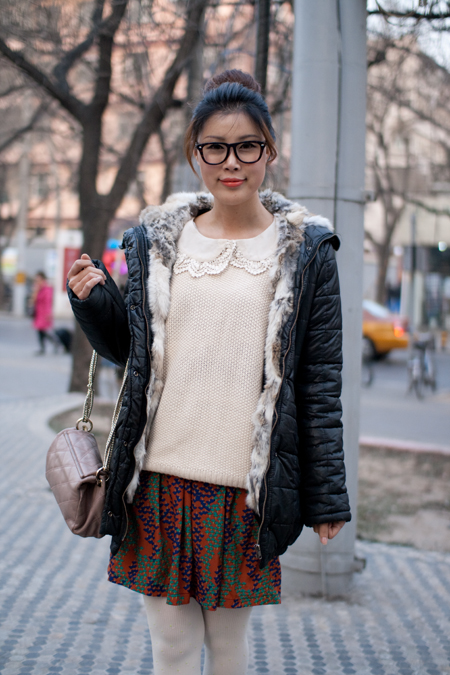
Photo: Suzy
Over the last week, the extreme chill finally started to pass and Sanlitun shoppers could unzip a little.
Blog, Consultancy, Shop

Photo: Suzy
Over the last week, the extreme chill finally started to pass and Sanlitun shoppers could unzip a little.
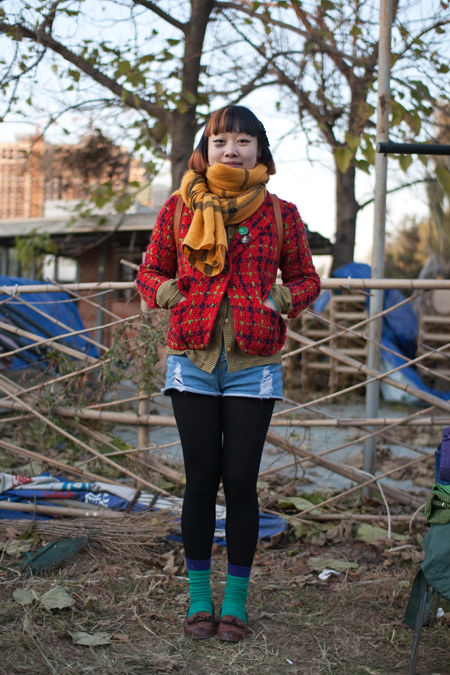
Photo: Suzy
This young student has it all going on. This is the kind of boho Beijinger we’ve all come to love.
Thanks to Suzy for starting up the Stylites Tumblr. Tumblr users who love Stylites now have a place to call home.
From Weibo, it appears that she is something of a local style icon.
Chinese tourists were out in full force this past holiday season, causing quite a stir in the western world. According to Global Blue, a tax-refund and shopping service provider, Mainland tourists’ duty-free spending globally in December not only was estimated at over $170 million, but also accounted for more than 24 percent of the company’s global transactions, making them the largest demographic of tax-free shoppers in the world. Given these numbers, it is little surprise that stores all over the world are targeting Chinese consumers with collections designed specifically for them like dragon inscribed investment-grade gold.
Favorite of Beijing fashionistas, Beauty Berry by Wang Yutao just became the first Mainland Chinese fashion designer to show at Berlin Fashion Week. His trip and show were financed by Mercedes Benz, the main sponsor for Beijing and Berlin fashion weeks. More from the WSJ.
To coincide with the Dragon’s onslaught, here are some tasty morsels from the global press and the China fashion blogosphere.
At WWD, Hong Huang (THE Hong Huang, I imagine) complains of schlepping through Europe’s fashion weeks while her family is home enjoying dumplings and conviviality. She attributes scheduling that ignores Spring Festival to a paucity of Chinese buyers and multibrand department stores. Despite the purchasing power of consumers, Chinese brands stores and brands still lack clout.
Originality or its absence is related, Huang thinks. She cites the amusing predilection of Chinese for naming their brands after animals. Northeast Tiger, Baoxiniao (Happy Bird in Chinese) and Sept Wolves are major players who observed the early success of crocodile jerseys and concluded that animals sell.
Fashion-wise, she recommends red belts for all those born in the Year of the Dragon. As most will know, one must wear red in one’s birth year to avert ill fortune.
The Year of the Dragon is bound to bring good things for Chinese Vogue, as one can surmise from this Irish Times interview with EIC Angelica Cheung. In 2011, China was third among the 15 international editions in revenue. One might have guessed first, given the magazine’s almost dangerous heft and the frothiness of the market. I will have to ask friends how local editions of Bazaar and Cosmo compare.
Over at agglomerator China Fashion Bloggers, we see Hurun Report‘s list of the top ten gifting brands. Unsurprisingly, Louis Vuitton, Chanel and Hermès dominate. The only local brand is Moutai, that exceedingly mild white spirit.
AnyWearStyle runs through the highlights of 2011, including Burberry, Prada, Louis Vuitton, and Bulgari events, and makes predictions for 2012. These include that much-lauded Uma Wang will be Designer of the Year and young Xiao Wen, Model of the Year. Sister site, AnyShopStyle, is also offering a special Chinese New Year discount. This is the spot for buying designers like Xander Zhou, Leo Kong, and others online.
Jing Daily speaks of eight recent trends and suggests the indignation toward high luxury taxes will intensify with little happening, conspicuous consumption will continue its “gradual death” – or what I might call a transition to manifestations considered less vulgar, and the luxury e-commerce market, now led by players like Xiu.com, Shangpin.com and 5LUX.com will undergo a weeding out process. Meanwhile, this piece at Jing forecasts a continued skyrocketing in Chinese luxury consumption abroad, including during the current New Year holiday.
Timothy Coghlan of The Maosuit gives us some great images of recent advertising campaigns with Chinese themes and all the special editions released for the Dragon Year. Huge events in 2012 will include Louis Vuitton celebrating year 20 in China by re-opening their Shanghai Plaza 66 Flagship, which will be the brand’s largest China outlet. LVMH will also commence a luxury mall project in Shanghai, with Macao Casino magnate Stanley Ho. The L’Avenue project in West Shanghai to host the complete stable of LVMH brands as well as a fancy office building. Colossal but oft-forgotten cities like Shenyang, Hangzhou and Tianjin will also see droves of new luxury brand malls opening.
So, just a lot more exuberance in the Year of the Dragon.
For the start of the Year of the Dragon, I decided to share my personal favorite images from the Rabbit.
This is just so much fun and what a great pair!
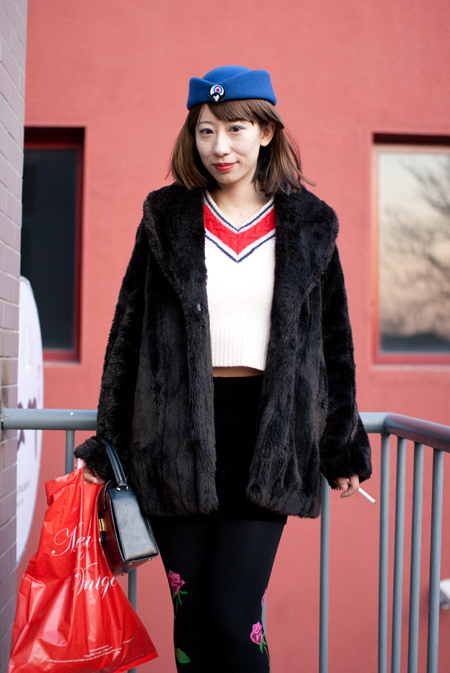
Photo: Suzy
Perhaps there is a bit too much here and her taste may not be entirely unimpeachable, but there is something appealing about the eclecticism here.
I rarely put models up here, but this confrontational chinoiserie from a cosplay party was irresistible.
As was this dramatic coat from the same event.
And what a nice use of blue and lovely smile!
And here is some blue with pop!
Maybe it was the year that local fashionistas discovered blue and realized it is even more adaptable than black.
Thick frames and workwear were also major trends.
Behind this rather S&M look is the chemical tank at 751 that remained the most popular venue for fashion events this year.
An aggressive adrogyny kept appearing.
This was an interesting mixture of mostly items mostly from Western brands to create an effect that seemed undeniably Chinese, or perhaps Uyghur.
Retro florals were the thing to do.
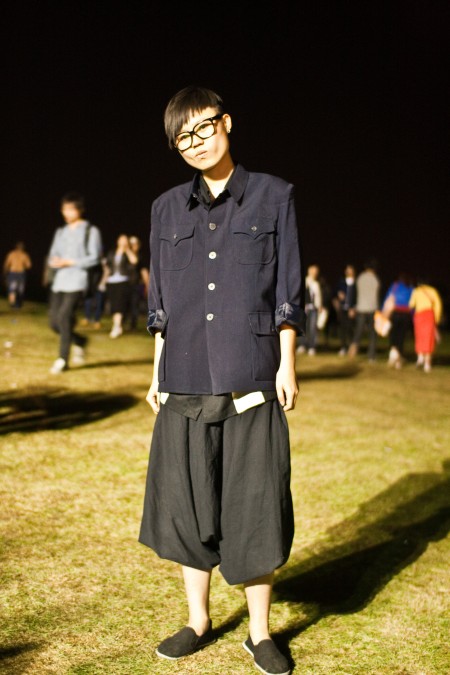
Photo: Suzy
Chinese-influenced looks grew as a trend this year.
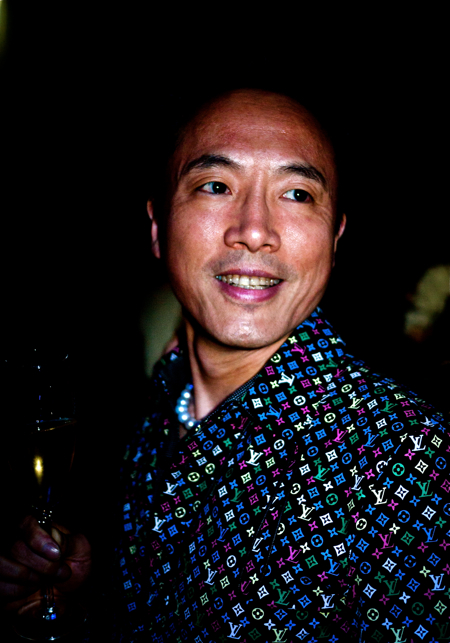
It was a year in which headlines constantly announced Chinese consumers were abandoning conspicuous consumption and logos. The new fashionistas must wear labels with irony.
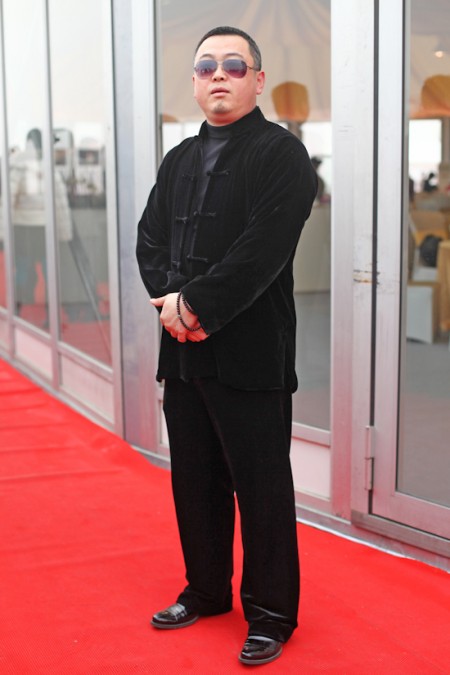
And it was also a year in which luxury consumers in second-tier gained increasing attention.
Which was your favorite look?
I am now on a well-known island chain southeast of Florida with my parents and infrequent internet access. Regular programming will return soon. My apologies for the paucity of posts.
With China’s design school churning out graduates and droves returning from the top schools abroad, the number of designers plying their trade has been increasing rapidly. Designer, curator, and entrepreneur Song Tao – a true mover and shaper – champions a fresh, but distinctly Chinese, aesthetic. Known for his product and interior design, Song is perhaps even more famous for the work he has done on promoting his peers.
Armed with a master’s degree in plastic arts from the Sorbonne, Song returned home to found Tao Gallery, a design space, in 1994. In 2002, he started ZI ZAO SHE, a brand that promotes his designs alongside those of other rising stars. This brand is known for its re-interpretations of classic Chinese shapes in contemporary materials like lucite. Subsequently in 2009, he spearheaded the China Furnishing Designer Brand Alliance and founded O Gallery in Beijing’s 798, a one-stop destination for viewing the work of China’s top designers as well as that of top international stars.
Song has curated shows from the Ullens Center to Art Beijing with a participant list that reads like a who’s who of contemporary Chinese design: Shao Fan, Sun Wentao, Liu Feng, Jia Li, Chen Darui, Ma Xiaowei, Wang Zhenfei, Fei Ruo, Xie Dong, Wen Miao, Xiao Tianyu, Gu Qigao, Wang Ke, Shi Jianmin, Gao Yiqiang, Huang Ying, and others. Many of these same designers have work that is available at O Gallery.
The future is bright for design, says Song. “The success of luxury brands like LV here in China taught us that people buy the real thing once they have the money” he comments. “Now plenty of people have the money. If they appreciate design, they will definitely pay for the original.â€